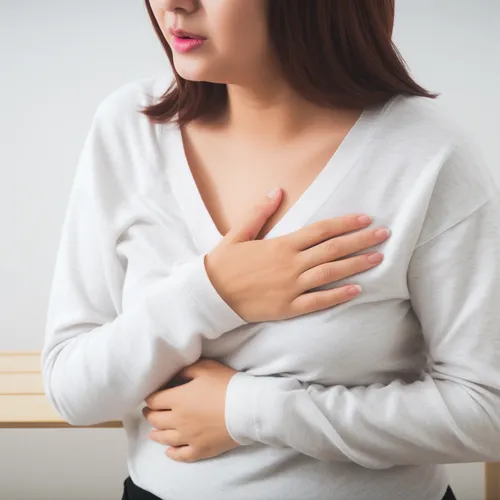Are sore boobs a sign you’re ovulating? For many women, breast tenderness is a common occurrence around ovulation. But what causes this symptom and how can you tell if it’s related to your menstrual cycle? In this article, we’ll explore the link between ovulation and breast pain.
Five Suggested Titles
- Unpacking Ovulation Breast Pain: Causes and Symptoms
- Booby Traps: Making Sense of Ovulation and Breast Tenderness
- Sore Breasts Mid-Cycle? It Could Be Ovulation
- Breast Pain and Ovulation: What’s the Deal?
- Ovulation 101: Why Do My Boobs Hurt?
How Ovulation Affects Your Body
Ovulation is when an egg is released from your ovary ready for fertilisation. It happens roughly halfway through your menstrual cycle. As your body gears up to ovulate, you may notice some physical symptoms. Common ovulation signs include:
- Light spotting
- Increased libido
- Abdominal cramps
- Changes in vaginal discharge
- Breast and nipple tenderness
These are due to shifts in your estrogen and progesterone levels around ovulation. While useful indicators, symptoms can vary widely among women. Using ovulation test kits or tracking basal body temperature can provide confirmation.
Breast Pain and Ovulation: What’s Normal?
Many women experience breast soreness around ovulation. The intensity ranges from mild sensitivity to severe discomfort. Exact timing differs too. Some feel it leading up to ovulation, others after. But breast changes around mid-cycle are usually normal.
Anovulatory cycles, where no egg is released, can also cause breast pain due to hormone fluctuations. Overall, sore breasts often signal ovulation. However, severity or prolonged symptoms may require medical advice.
Why Do Breasts Hurt During Ovulation?
Shifting estrogen levels are chiefly responsible for breast pain during ovulation.
In the lead up to ovulation, rising estrogen overstimulates breast tissue in some women. This can cause swelling, lumpiness, and breast tenderness.
After ovulation, when progesterone surges and estrogen drops, breasts again feel the effect. The culprits are your fluctuating hormones.
Signs Your Breast Pain is Ovulation-Related
If you feel the symptoms below around mid-cycle, ovulation could be the cause:
- Breast tenderness, fullness, heaviness
- Nipple sensitivity
- Swollen, lumpy, or dense breast tissue
- Underarm soreness
Discomfort usually peaks just before ovulation and improves shortly after. By comparison, early pregnancy breast pain generally starts 1-2 weeks after conception and persists.
Of course, ovulation isn’t the only cause of breast pain. Monitoring other ovulation symptoms as well can help confirm the link.
Other Causes of Breast Pain
While ovulation is a top source of breast/nipple pain, here are other possible causes:
- Pregnancy – Tender, swollen breasts can signal pregnancy. Plus nausea, fatigue, and missed periods.
- Breastfeeding – Pain is common when first breastfeeding, often from poor latch or positioning. Certain conditions like mastitis can also cause breastfeeding pain.
- Menstrual cycle – Many women have sore breasts/nipples before their period due to hormonal changes.
- Skin conditions – Eczema or dermatitis can cause irritated, sensitive skin on breasts.
If pain fails to improve after ovulation or causes concern, see your doctor. Persistent symptoms may indicate an underlying issue needing assessment.
Managing Ovulation-Related Breast Pain
Fortunately, ovulation breast tenderness is temporary. Here are some self-care tips to ease discomfort:
- Over-the-counter pain relief like paracetamol or ibuprofen
- Soothing pain relief gel applied to the breasts
- An appropriately fitted, supportive bra
- Comfortable sleepwear to avoid friction on breasts
- Avoiding caffeine, salt, and high-fat foods
See your GP if pain remains severe despite painkillers or you suspect pregnancy. Some breast pain requires medical care.
Understanding Your Cycle
Ovulation pain patterns vary widely. Getting to know your individual cycle can help identify what’s normal or abnormal for your body.
Tracking ovulation signs alongside other measures like ovulation test kits helps build that understanding. Over time, you’ll learn to differentiate typical mid-cycle breast pain from potential issues needing medical review.
Understanding your body provides valuable insight when trying to conceive or simply monitoring your reproductive health. Familiarising yourself with common ovulation symptoms like breast changes is an empowering first step.
Photo Credit: “Breast Pain” by Anthony Cunningham for Zoom Baby
Zoom Baby is a leading supplier of Pregnancy Tests and Ovulation Test Kits





